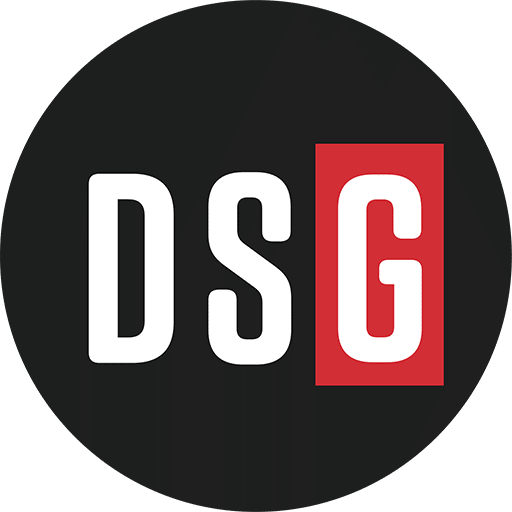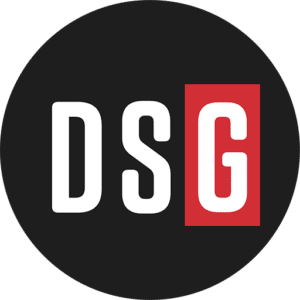Listen to our Wholesale Change conversation with Ben Hensler, now on demand.
Since Chief Sales and Marketing Officer Ben Hensler joined Motion & Control Enterprises (MCE) in 2021, the company has experienced significant growth, including the acquisition of 10 businesses, enhancing their offerings for each stage of the product lifecycle. These acquisitions have provided customers with more innovative solutions. MCE offers solutions to automation, engineered systems, fluid power, compressed air, flow control, lubrication and instrumentation challenges.
In this Wholesale Change episode, Jonathan Bein, Ph.D. talks with Hensler about creating a successful growth platform. Key parts of MCE’s platform include consolidated buying power, cross-selling optimized pricing, expanded product lines, and value-added services. Hensler has over 25 years of experience in B2B distribution, sales, strategic planning and operations.
Jonathan Bein: Tell us about Motion & Control Enterprises and your position in the market.
Ben Hensler: Motion & Control Enterprises, or MCE, originated as Ritter Technology, an industrial motion and control products distributor and one of the Parker Hannifin distribution channel distributors. We saw an opportunity to expand to provide full lifecycle solutions across a group of highly technical products that customers need and can’t get anywhere else because they need a combination of product availability and technical knowledge. We built upon the primary categories that remain critical to our customers, especially process manufacturers and OEMs. Then, we bundled these products together in a way they can consolidate spend. About 40% of what goes out of our doors needs to be technically specified, manufactured from scratch and delivered to our customers.
I had an interesting start, working for Grainger. I learned that within the Grainger world of products, it’s easy to convince customers to consolidate spend in general service tools and safety. But when you go to them and offer to handle complex valves or other technical systems, they say, “No, you can’t. That’s Jeff or Lisa, or Paul’s role.”
I learned these salespeople were differentiated because of their knowledge and their ability to specify the products needed for these really technical processes. As I moved on to other companies, I got to see that firsthand at work. It’s awe-inspiring.
Bein: In the private equity world, they look at companies as either platforms or add-ons. Can you give us insight on how you define each and how it applies to your business?
Hensler: You want to start with a platform company and then add additional companies onto that. The platform company can typically be a small to medium-sized company. You may end up adding bigger companies as you move through the process.
When we look at companies, we look at two things. One, do they fit into this world we’re trying to create, a world of lifecycle solution products, inflow control, fluid power, compressed air and automation processes in that arena? There are companies we buy that are just outside that. The second question is, are they providing something unique and different to this market that is truly beneficial?
Geography is also at play. We work predominately in the Midwest but have expanded into the Mid-south Gulf Coast and into the East Coast. We see ourselves filling in the rest of the East Coast and working our way West.
The last piece of all this is our ability to stay true to our vendors, suppliers and manufacturers. They are the best and who we should go to market with.
Bein: It sounds like in a lot of cases you are looking for something that’s complementary, not just replicating what you have in a new location. You’re looking to bring something new to the portfolio.
Hensler: Yes. Replicating would be purely a geographic play. Whereas, finding those unique adjacent offers that fit within our space is what intrigues us.
Bein: Let’s talk about the concept of a platform. An element of your platform is anything that when applied to the add-on company will predictively create value in a period of time. Would that be a reasonable definition for a platform element?
Hensler: Yes, absolutely. In general, we want to move our businesses into the platform and take advantage of the things you are talking about. Proton.ai is a tool we have been using and love. It applies to all the businesses we work with. It’s a phenomenal way to add value to integrated businesses and apply to inside sales and pricing technology. One of our big drivers as we layer these businesses on top of each other in the same market is to make sure we are using the power of our relationships within the platform. About 5% of our business is driven by using an existing relationship to sell adjacent products.
Bein: Talk to us about what you have seen with pricing as part of the platform.
Hensler: It’s one of my favorite subjects. I’ve worked on pricing with three or four different companies. There are a couple components to pricing. We’ve adopted SPARXiQ and we work closely with them. I think they provide a great model that is simple to use, easy to understand, easy to adopt and easy to put in place.
As we go through change management, you think about these smaller businesses. They’ve been built from scratch by an entrepreneur from almost nothing. I commend those leaders for doing that. But oftentimes their pricing structure is a simple, margin-based process. As we bring these companies in, we help them understand that pricing can be very strategic and when it is strategic, it can be very profitable.
What sticks out to me throughout this process is that sales reps begin to understand the immense value they bring to their customers. They learn that pricing or margin is secondary to that value. They understand that the work they do is work no one else can do. It’s truly an intrinsic value that their customers can’t find, negotiate or navigate to.
Price shouldn’t be viewed as the bid to win business. You should be thinking about the price that will deliver value. As salespeople understand the value they bring to the customer, margin and commissions go up.
Bein: That makes sense. We do many surveys for the customer experience (CX) work we do and we look at about 18 different factors. I’ve never seen price named first in terms of importance.
One of the things you mentioned earlier was selling adjacent products. Tell us about that element of your platform.
Hensler: I’d say there are three different types of cross-sell opportunities. The measurable one is when companies transfer product and then sell it. So, I’m going sell this product I haven’t normally sold before, but it’s available to me now.
Adjacent to that, we see an opportunity when similar levels move through our CRM and our opportunity management, but we may have a lot of other things going on that’s relationship transfer. That may include four-legged or six-legged sales calls with different offers being delivered simultaneously. In that instance, we’ve added a corporate accounts team for big customers that see the value of those products and solutions and also see the value of consolidating that business.
The third cross-sell opportunity is where we turn it over to a company that offers complex solutions, and they handle the work in its entirety. We just deal with the commission on the back end.
We’re having tremendous success with that.
But it starts with culture. We had a really great national sales meeting last year and we’re going to continue that process. We bring people together in large settings to train them on the products at the same time. It is like speed dating, where two people meet and talk about the best four or five customers they can work on together. Then, they go and talk to end-users in engineering and operations about these solutions. We then talk to procurement and finance about bundling holistic solutions.
Culture is more important than anything. It’s about helping people understand that while the products we’re selling are a little different, we’re talking to the same people about similar processes. For instance, the hoses and fittings on the robotic system may be over there, and the flow control and valves are over there but we’re talking to the same customers, with the same opportunities.
Bein: When that knowledge transfer starts to take root, it goes from a six-legged call to a four-legged call, and eventually a two-legged call.
Hensler: Yes. In the platform business, it starts to lead into what the sales model will evolve to be over time. We’re not evolving at hyper speed, but the vendors in the technical roles within these businesses are retiring and there has been a lack of replenishment over the last couple decades. That technical knowledge that existed within our customers is going away and they are more reliant on us than ever. Making someone a 20-year technical expert overnight is tough. You have to think about building a strong layer of knowledge in the business and what resources are necessary to get sales to the two-legged call.
Bein: Talk to us about the integration once you get an acquisition done and the private equity folks and CFO have done their part. The ink is dry. What happens then? What’s your role? What do you see in the organization?
Hensler: This comes out of bruises and scars, too. We all make mistakes, and we get to figure it out. These businesses have been doing something unique and well for a very long time. We want to jar that and take it throughout the business. That’s the No. 1 thing. We need to make sure we understand what makes that business great over a period of time before we start to integrate them into the platform and change sales structure. I think that’s the most important thing. Everybody wants synergies and cost saving opportunities, but really, it’s about that secret sauce.
Bein: Do no harm.
Hensler: Exactly. Don’t break it. In that same vein, let the culture spread. Bring people together. Let the sellers, customer service, sales and operations meet. Let’s not worry about the leadership meeting. Let’s worry about people getting to know each other within the businesses. Let’s have focus groups where we can talk about what they would like to see in the business. I think those cultural elements are so important and I think everybody needs to do more of it.


